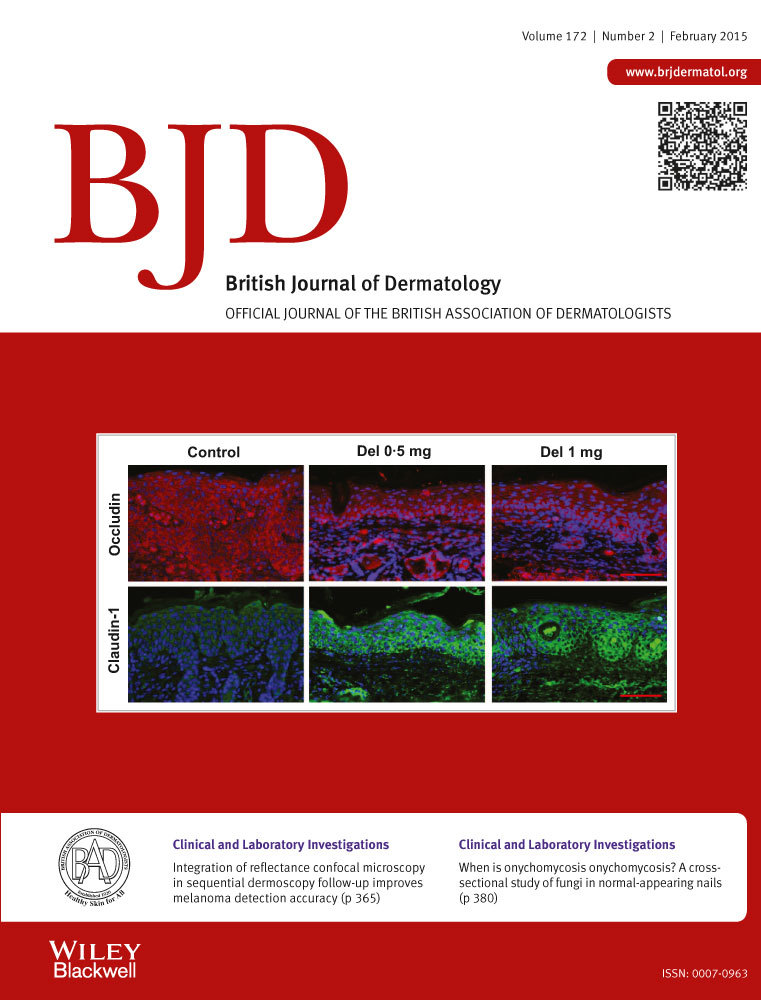Founder mutation in dystonin-e underlying autosomal recessive epidermolysis bullosa simplex in Kuwait
Summary
Only two homozygous nonsense mutations in the epidermal isoform of the dystonin gene, DST-e, have been reported previously in autosomal recessive epidermolysis bullosa simplex (EBS); the affected pedigrees were Kuwaiti and Iranian. This subtype of EBS is therefore considered to be a rare clinicopathological entity. In this study, we identified four seemingly unrelated Kuwaiti families in which a total of seven individuals had predominantly acral trauma-induced blistering since infancy. All affected individuals were homozygous for the mutation p.Gln1124* in DST-e, the same mutation that was identified in the originally reported family from Kuwait. Haplotype analysis in the five pedigrees (including the previous case) revealed a shared block of ~60 kb of genomic DNA across the site of the mutation, consistent with a founder effect. Most heterozygotes had no clinical abnormalities although one subject had mild transient skin fragility during childhood, an observation noted in the previously reported Iranian pedigree, suggesting that the condition may also be semidominant in some pedigrees rather than purely autosomal recessive. Our study reveals propagation of a mutant ancestral allele in DST-e throughout Kuwait, indicating that this subtype of EBS may be more common in Kuwait, and perhaps other Middle Eastern countries, than is currently appreciated.




